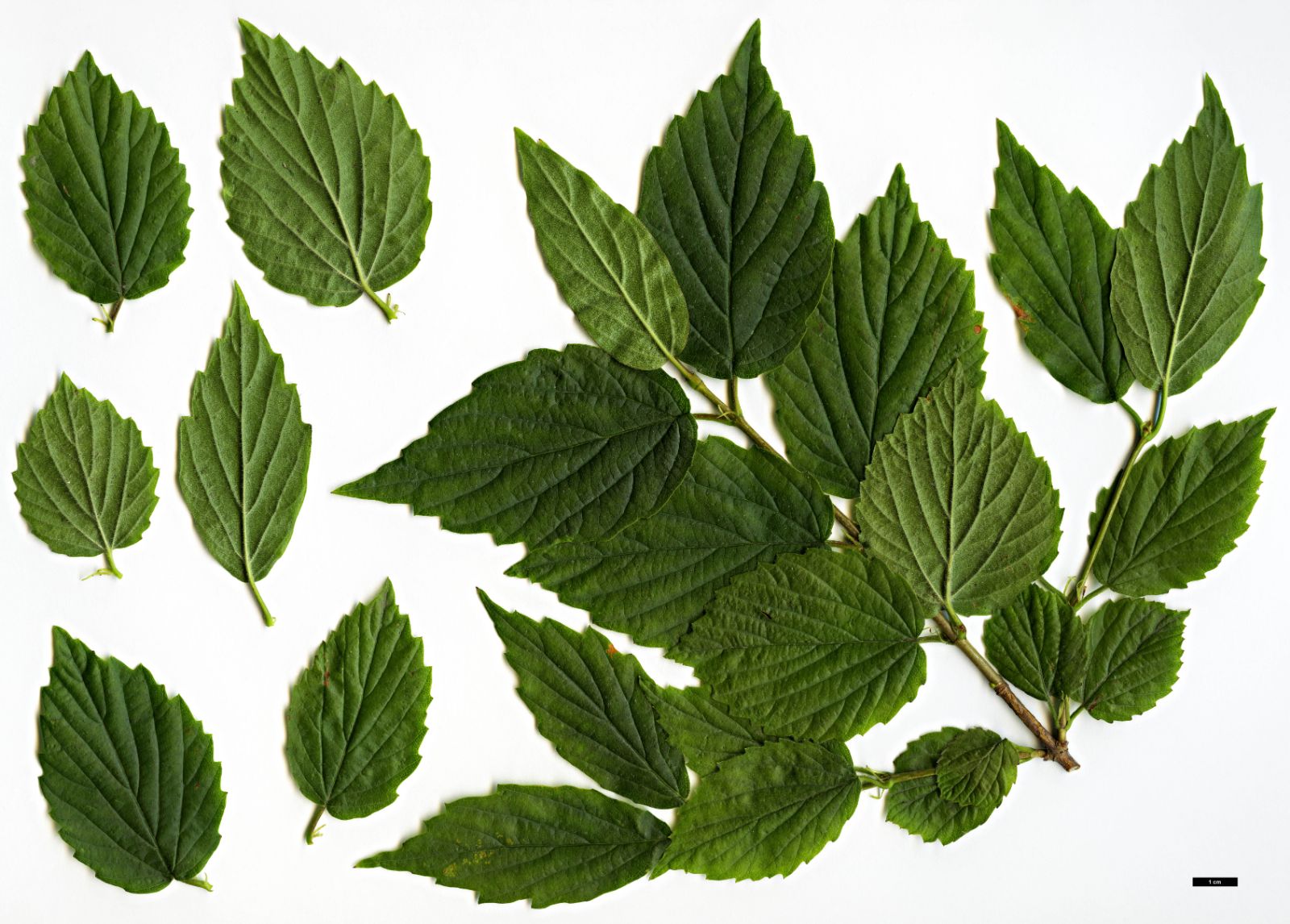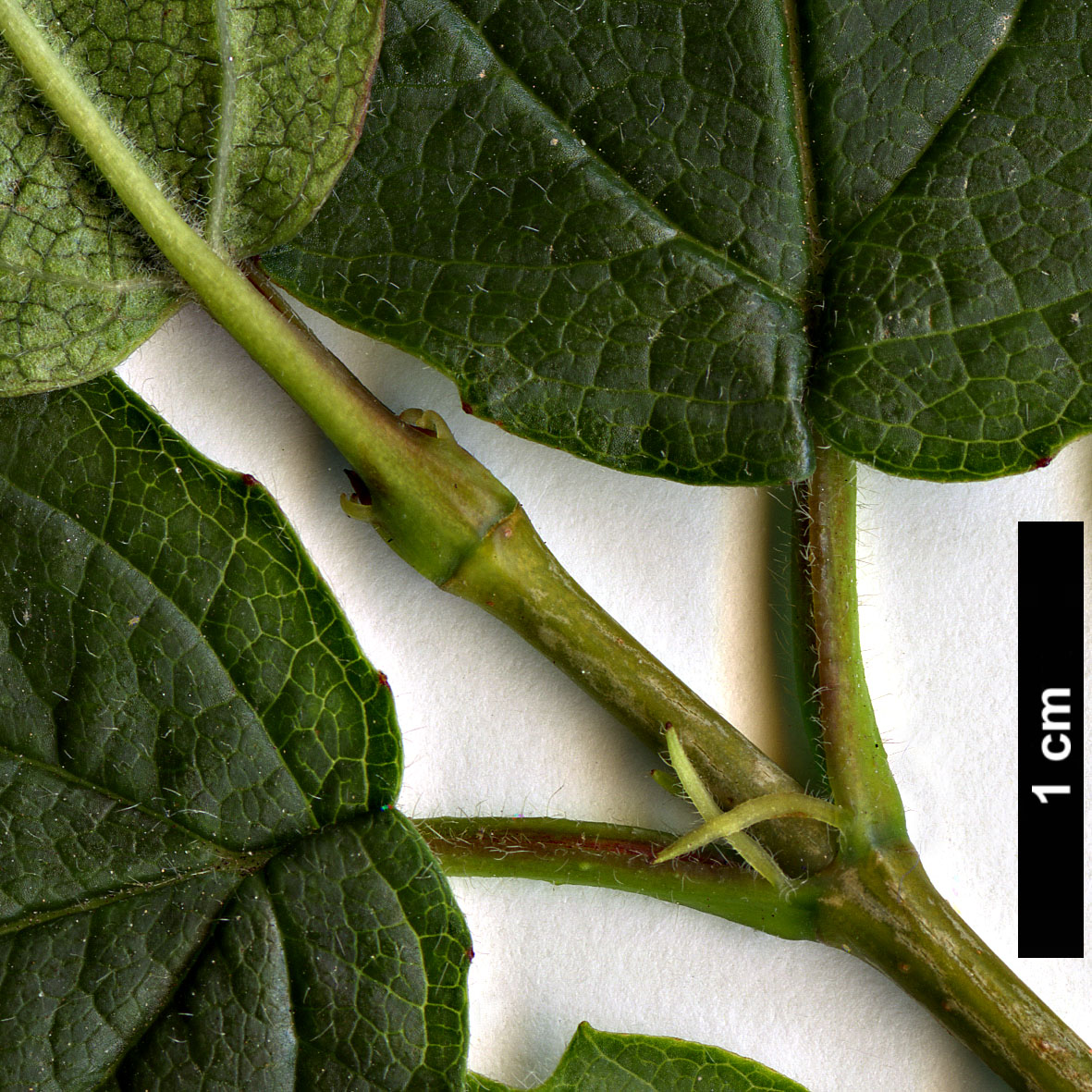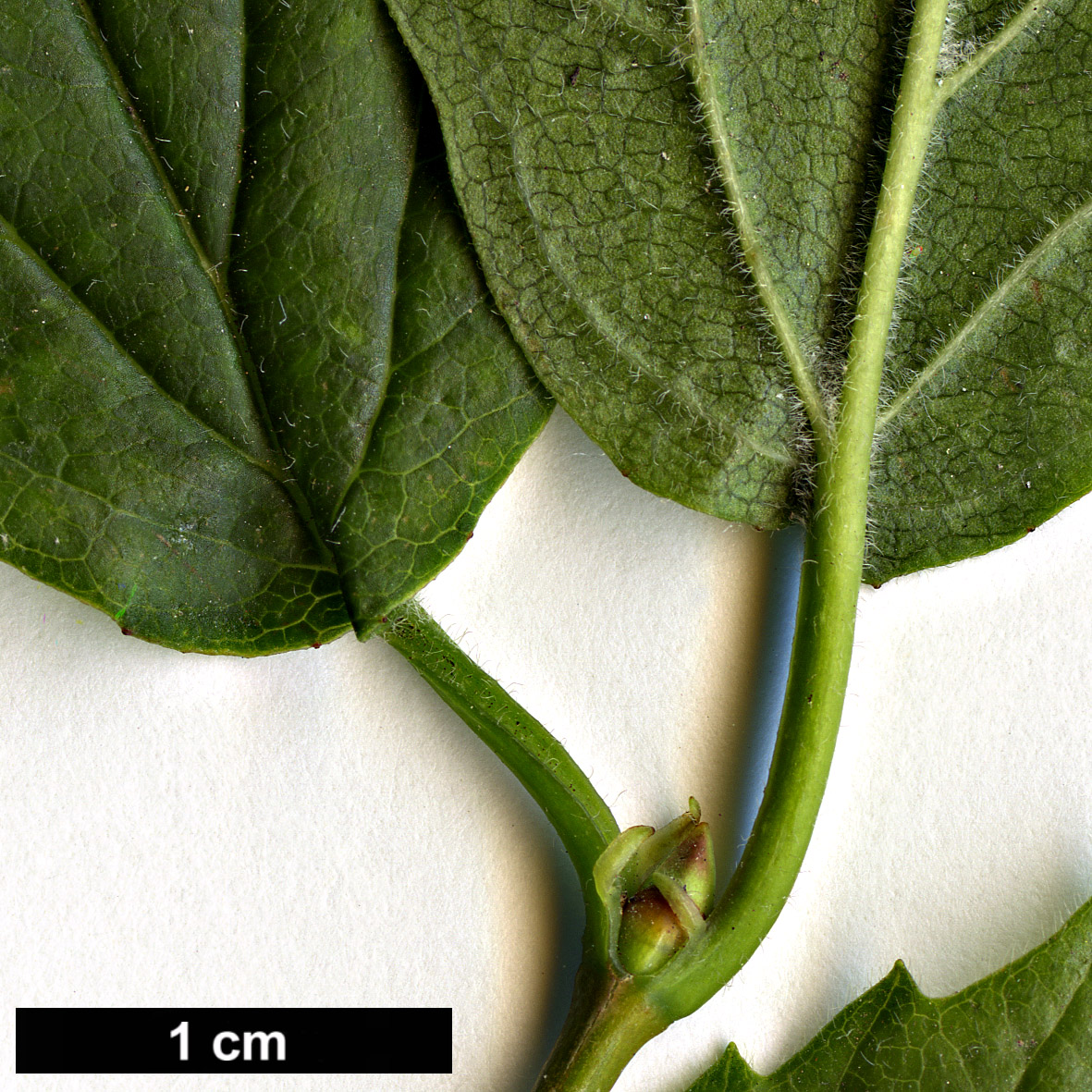Viburnum molle
Credits
Article from Bean's Trees and Shrubs Hardy in the British Isles
Recommended citation
'Viburnum molle' from the website Trees and Shrubs Online (treesandshrubsonline.
Genus
Synonyms
- V. demetrionis Deane
Infraspecifics
Other taxa in genus
- Viburnum acerifolium
- Viburnum betulifolium
- Viburnum × bodnantense
- Viburnum buddleifolium
- Viburnum burejaeticum
- Viburnum × burkwoodii
- Viburnum × carlcephalum
- Viburnum carlesii
- Viburnum cassinoides
- Viburnum cotinifolium
- Viburnum cylindricum
- Viburnum davidii
- Viburnum dentatum
- Viburnum dilatatum
- Viburnum erosum
- Viburnum farreri
- Viburnum foetidum
- Viburnum grandiflorum
- Viburnum harryanum
- Viburnum henryi
- Viburnum hupehense
- Viburnum japonicum
- Viburnum kansuense
- Viburnum lantana
- Viburnum lantanoides
- Viburnum lentago
- Viburnum macrocephalum
- Viburnum nudum
- Viburnum odoratissimum
- Viburnum opulus
- Viburnum phlebotrichum
- Viburnum plicatum
- Viburnum propinquum
- Viburnum prunifolium
- Viburnum rhytidophyllum
- Viburnum rigidum
- Viburnum rufidulum
- Viburnum schensianum
- Viburnum setigerum
- Viburnum sieboldii
- Viburnum suspensum
- Viburnum tinus
- Viburnum utile
- Viburnum veitchii
- Viburnum wilsonii
- Viburnum wrightii
A deciduous shrub of bushy habit, 6 to 12 ft high; young shoots glabrous and bright green at first, soon turning grey; older bark peeling. Leaves broadly ovate to roundish, 2 to 5 in. long, 13⁄4 to 33⁄4 in. wide, mostly heart-shaped at the base, slender-pointed, coarsely triangular toothed, the teeth twenty to thirty on each side, upper surface dark green and glabrous, paler and more or less downy beneath; stalk 1⁄2 to almost 2 in. long. Flowers white, all perfect, 1⁄4 in. across, produced in long-stalked cymes 2 to 4 in. wide. Fruits scarcely 1⁄2 in. long, oval, much compressed, blue-black.
Native of eastern-central North America, rare in gardens (the plant once grown as V. molle was a form of the V. dentatum complex). V. molle is very distinct from other American viburnums with blue-black fruits in the combination of the loose peeling bark of the older branches, the long-stalked leaves, and the presence of a pair of glandular-downy stipules on the petiole.
V rafinesquianum Schultes
Synonyms
V. villosum Raf., not Swartz
V. affine var. hypomalacum Blake
A shrub to about 8 ft high; bark not peeling. Leaves from narrow- to broad-ovate, acuminate or acute, truncate to slightly cordate at the base, with up to ten rather coarse teeth on each side, softly downy beneath. Petioles very short (rarely more than {1/4} in. long), usually furnished with stipules. Cymes to about 3 in. wide. Fruits blue-black, ellipsoid; stone flattened, shallowly grooved. Native of eastern N. America, sometimes cultivated for its scarlet autumn colouring. It has been confused with the downy form of V. dentatum (var. pubescens) but differs, among other characters, in the very shortly stalked leaves.



